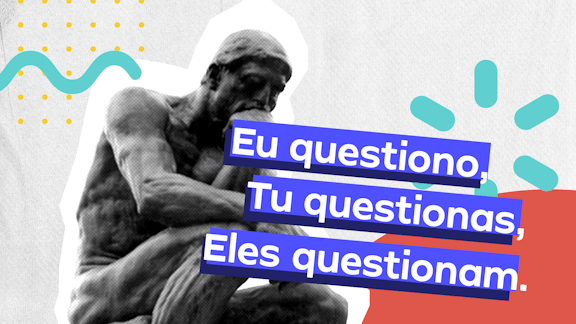Questão 3e05bc95-c4
Prova:UEG 2018
Disciplina:Inglês
Assunto:Aspectos linguísticos | Linguistic aspects
Analisando-se aspectos linguísticos e estruturais do texto, constata-se que
Analisando-se aspectos linguísticos e estruturais do texto, constata-se que
Leia o texto a seguir para responder à questão.
Who's driving? Autonomous cars may be entering the most dangerous phase
Autopilot controls are not yet fully capable of functioning without human intervention – but they’re good
enough to lull us into a false sense of security.
When California police officers approached a Tesla stopped in the centre of a five-lane highway outside
San Francisco last week, they found a man asleep at the wheel. The driver, who was arrested on suspicion of
drunk driving, told them his car was in “autopilot”, Tesla’s semi-autonomous driver assist system.
In a separate incident, firefighters in Culver City reported that a Tesla vehicle parked at the rear of their fire
truck as it attended an accident on the freeway. Again, the driver said the vehicle was in autopilot. The oft-repeated promise of driverless technology is that it will make the roads safer by reducing human
error, the primary cause of accidents. However, those vehicles have a long way to go before they can eliminate
the drivers.
However, research has shown that drivers get lulled into a false sense of security to the point where their
minds and gazes start to wander away from the road. People become distracted or preoccupied with their
smartphones. So when the car encounters a situation where the human needs to intervene, the driver can be slow
to react.
During tests the IIHS recorded a Mercedes having problems when the lane on the highway forked in two.
The radar system locked onto the right-hand exit lane when the driver was trying to go straight.
Concern over this new type of distracted driving is forcing engineers to introduce additional safety features
to compensate. For example, GM has introduced eye-tracking technology to check the driver’s eyes are on the
road while Tesla drivers can be locked out of autopilot if they ignore warnings to keep their hands on the steering
wheel.
In spite of these problems, Tesla’s CEO, Elon Musk, remains bullish about his company’s autonomous
technology, even suggesting that by 2019 drivers would be able to sleep in their cars – presumably without being
arrested by highway patrol officers.
Disponível em: <https://www.theguardian.com/technology/2018/jan/24/self-driving-cars-dangerous-period-false-security>. Acesso em: 23 fev. 2018. (Adaptado).
Leia o texto a seguir para responder à questão.
Who's driving? Autonomous cars may be entering the most dangerous phase
Autopilot controls are not yet fully capable of functioning without human intervention – but they’re good
enough to lull us into a false sense of security.
When California police officers approached a Tesla stopped in the centre of a five-lane highway outside San Francisco last week, they found a man asleep at the wheel. The driver, who was arrested on suspicion of drunk driving, told them his car was in “autopilot”, Tesla’s semi-autonomous driver assist system.
In a separate incident, firefighters in Culver City reported that a Tesla vehicle parked at the rear of their fire truck as it attended an accident on the freeway. Again, the driver said the vehicle was in autopilot.
When California police officers approached a Tesla stopped in the centre of a five-lane highway outside San Francisco last week, they found a man asleep at the wheel. The driver, who was arrested on suspicion of drunk driving, told them his car was in “autopilot”, Tesla’s semi-autonomous driver assist system.
In a separate incident, firefighters in Culver City reported that a Tesla vehicle parked at the rear of their fire truck as it attended an accident on the freeway. Again, the driver said the vehicle was in autopilot.
The oft-repeated promise of driverless technology is that it will make the roads safer by reducing human
error, the primary cause of accidents. However, those vehicles have a long way to go before they can eliminate
the drivers.
However, research has shown that drivers get lulled into a false sense of security to the point where their
minds and gazes start to wander away from the road. People become distracted or preoccupied with their
smartphones. So when the car encounters a situation where the human needs to intervene, the driver can be slow
to react.
During tests the IIHS recorded a Mercedes having problems when the lane on the highway forked in two.
The radar system locked onto the right-hand exit lane when the driver was trying to go straight.
Concern over this new type of distracted driving is forcing engineers to introduce additional safety features
to compensate. For example, GM has introduced eye-tracking technology to check the driver’s eyes are on the
road while Tesla drivers can be locked out of autopilot if they ignore warnings to keep their hands on the steering
wheel.
In spite of these problems, Tesla’s CEO, Elon Musk, remains bullish about his company’s autonomous
technology, even suggesting that by 2019 drivers would be able to sleep in their cars – presumably without being
arrested by highway patrol officers.
Disponível em: <https://www.theguardian.com/technology/2018/jan/24/self-driving-cars-dangerous-period-false-security>. Acesso em: 23 fev. 2018. (Adaptado).
A
o vocábulo who, na sentença The driver, who was arrested on suspicion of drunk driving, pode ser
substituido por “which”.
B
na sentença they found a man asleep at the wheel, o vocábulo found exerce a função de verbo, sendo
passado simples do verbo “to find”.
C
os vocábulos distracted e preoccupied, na sentença People become distracted or preoccupied with their
smartphones, exercem funções de verbos.
D
a sentença the driver said the vehicle was in autopilot, na forma negativa, apresenta-se como “the driver
doesn’t say the vehicle was in autopilot”.
E
a sentença research has shown that drivers get lulled, na forma interrogativa, seria “does it have shown
that drivers get lulled?” .






